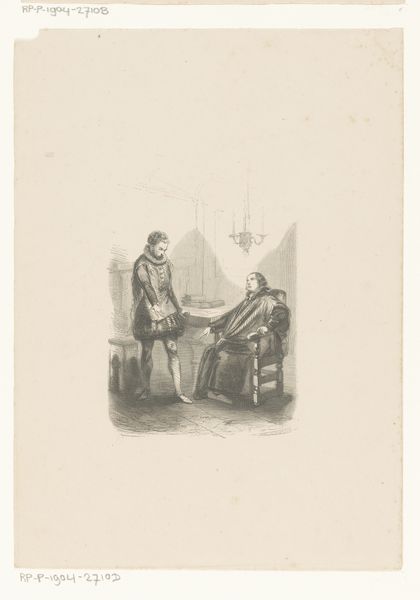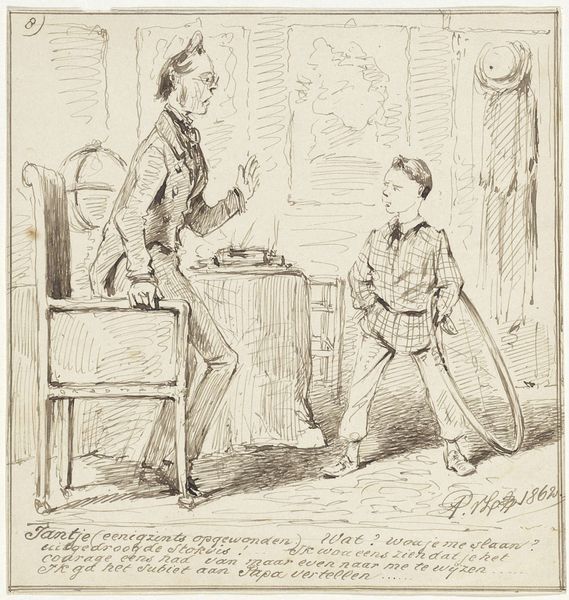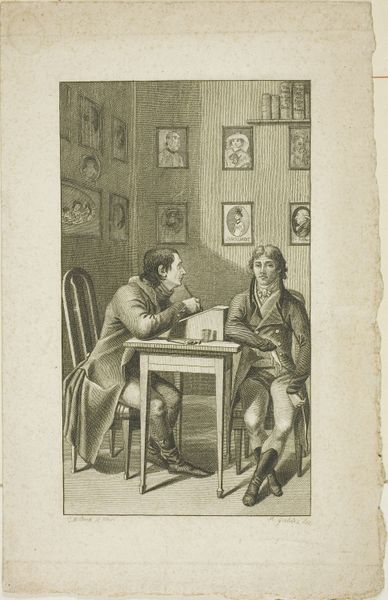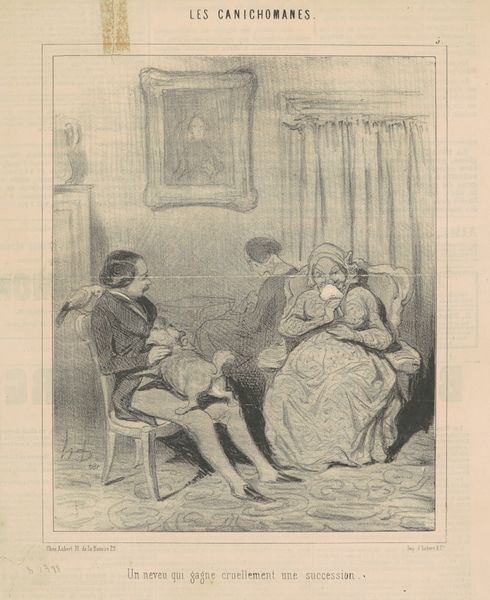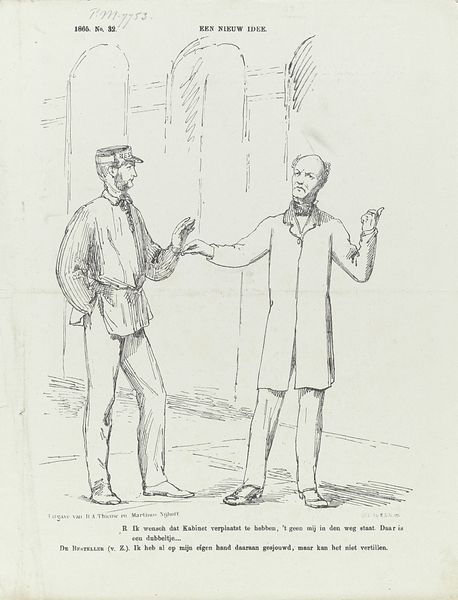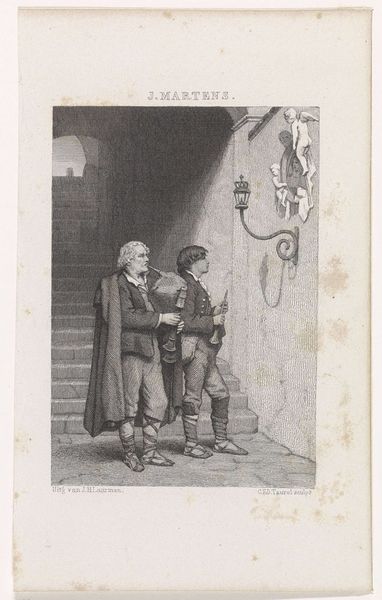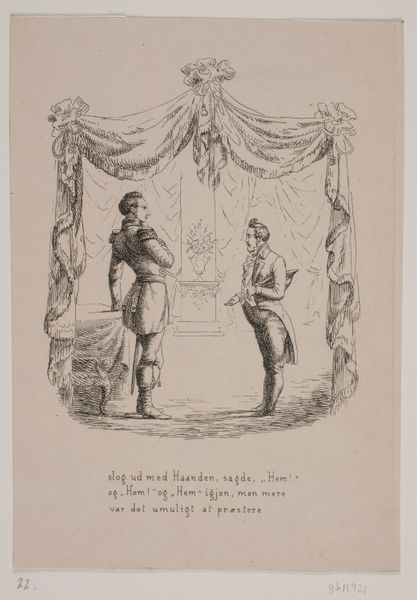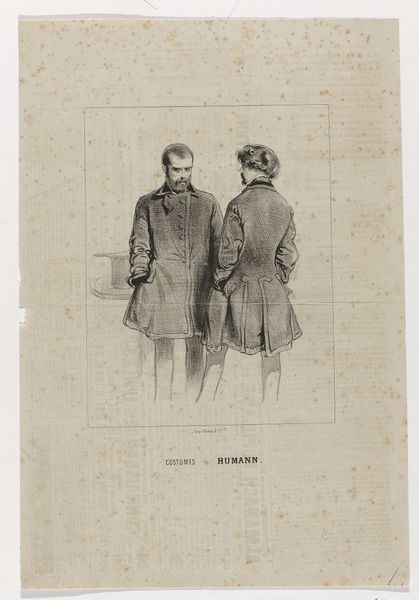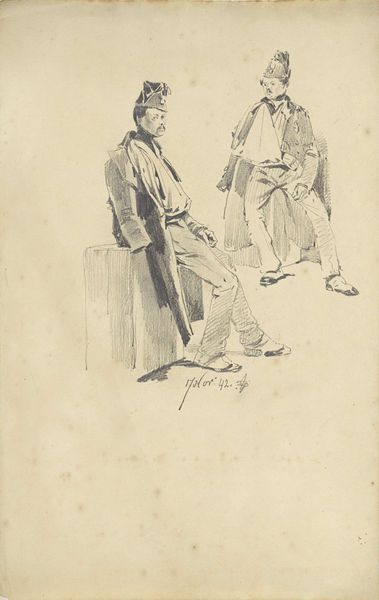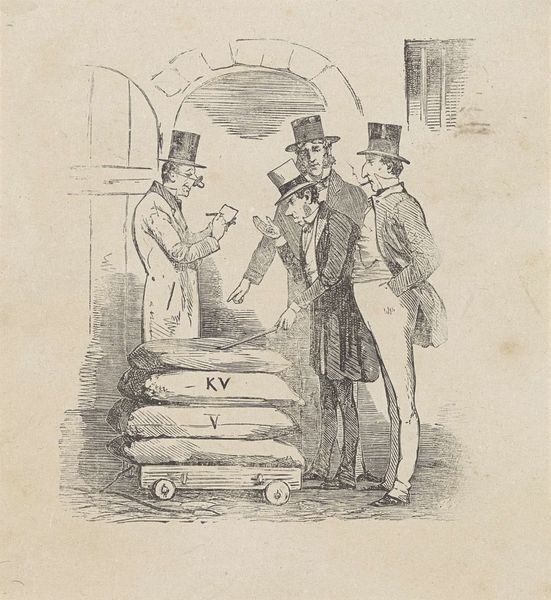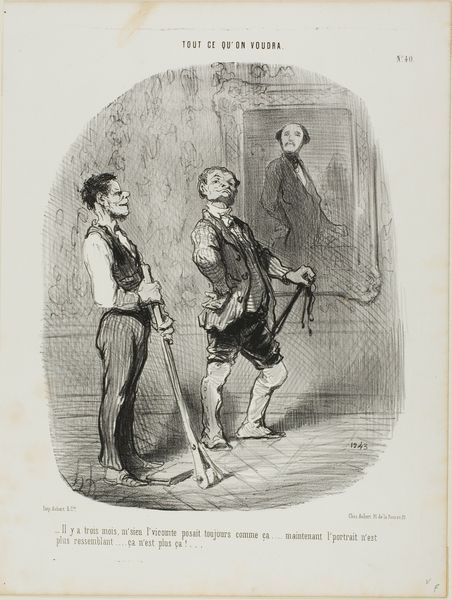
drawing, paper, pencil
#
portrait
#
drawing
#
paper
#
pencil
#
genre-painting
#
realism
Dimensions: height 231 mm, width 155 mm
Copyright: Rijks Museum: Open Domain
Editor: This is "Standing and Seated Man in a Tavern Interior" by Ferdinand Ernst Lintz, made sometime between 1843 and 1909. It's a drawing in pencil on paper and what struck me immediately is the artist's meticulous detail given the modest medium and muted tonality. What compositional aspects stand out to you? Curator: Indeed, the interplay of light and shadow commands attention. Consider the stark contrast between the shadowed interior and the subtle modeling of the figures. This deliberate manipulation of value creates depth, fostering a sense of enclosure within the tavern space. Observe the formal relationships: How does the linearity of the wooden bench echo in the structural elements? What effects does the pencil’s use engender within such space and subject? Editor: The sketchiness does emphasize the grittiness of a tavern scene. So you are pointing to a dialogue between line and shading to tell us about the tavern's interior, and how this all serves as an important feature? Curator: Precisely. The artist seems concerned with capturing the ambiance through purely formal means, rather than anecdotal narratives. This close observation yields a complex interpretation, if one accepts a world comprised primarily of visual events. Look at the tonal gradations within the background itself, almost like a series of planes. Editor: It’s interesting how such simple use of medium can have very structural elements at work in a seemingly banal genre scene. I would have been blind to that without considering how the line itself creates such interior depth and tonal richness. Curator: Formalist approaches provide powerful methods, do they not, toward grasping what some might term “artistic intention” that extends beyond the mimetic functions commonly ascribed to representational drawings.
Comments
No comments
Be the first to comment and join the conversation on the ultimate creative platform.
